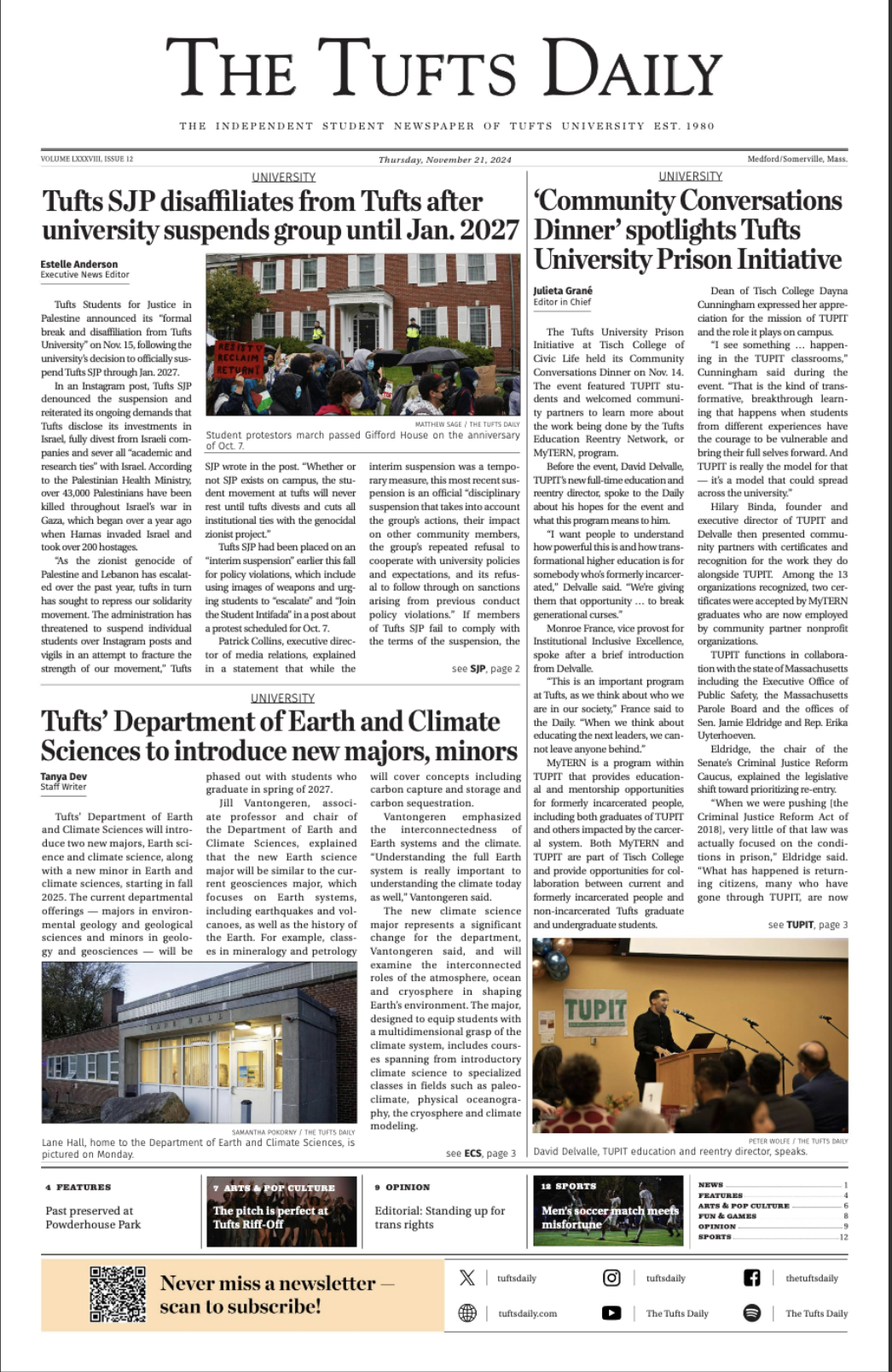Every now and then, exceptionally hardworking students are greeted by a grade of A+. But due to problems of grade inflation in colleges and universities across the nation, the GPAs of students receiving the grade are not as high as one would think.
While A+s appear as such on students' transcripts, the assigned GPA value for this highest grade is the same as a flat A: 4.0, the top of the University's GPA scale.
Dean of the Colleges James Glaser said that the University's GPA scale is "easily interpretable [and] I don't think it would be wise to change it." On the other hand, Department of Biology Chair Harry Bernheim said that A+s' translation to a 4.333 on the grade point scale "at first blush seems reasonable to me."
Many Tufts professors, such as the Department of Drama and Dance Chair Laurence Selenick, never give out A+s. "A, in my view, means 'superlative'. You cannot heighten a superlative -- it's like saying 'the most bestest,'" Selenick said. "I give [flat] A's to undergraduates only when their work is exceptional.
Other professors harbor no qualms about giving A+ grades but do emphasize that they are granted only to those students that truly deserve them. Department of Economics Chair Gilbert Metcalf said that he has given "fewer than ten A+s" throughout his ten-year teaching career.
"I view an A+ as a grade to be given to that extraordinary student who comes along very rarely and who has done work that is simply so much better than that done by otherwise superior students that some mark of distinction must be given," Metcalf said.
Bernheim agrees. He only gives A+s to Biology students who meet a very high standard. "These criteria are rarely met but when they are, I feel that the student should be recognized on their transcript with an A+," he said.
To some students, the prospect of receiving a 4.333 could serve to motivate. Sophomore Lane Howitt earned two A+s first semester freshman year, but was unhappily surprised when she found out it would not enhance her GPA in any way.
"When I saw the A+s, I kind of felt like my hard work [had been] worthwhile," Howitt said. "Then I saw it wasn't worth any more than an A and realized that I didn't have to put in nearly as much effort to get the same ultimate payoff... if you put in the extra effort, why is there no acknowledgement?"
To students such as Howitt, Glaser said he "can't imagine a student would ease off [his or her] studies because there wasn't a grade-point incentive."
International Relations Program Director Christiane Zehl-Romero warned that "if a student falls into 'apathy' because he or she does not have a chance to get extra grade points he or she might miss out on the [flat] A as well."
Though students' GPAs may not distinguish between an A and an A+, their rare presence may be impressive to anybody outside Tufts looking at a transcript, Zehl-Romero said.
Zehl-Romero said that A+'s are also taken into consideration when students are still undergraduates. When she is considering recommendations for summa cum laude and other academic and International Relations Department honors, she pays attention to students who have A+'s on their transcripts because "it does indicate special achievement."
This 'value' can be of a somewhat personal nature as well. "It's symbolic, but like many symbols, it's meaningful to the person who receives it," Glaser said.
Glaser said that most institutions in the United States follow the same policy as Tufts. This includes Brown, Yale, Harvard and Dartmouth. There are others such as Cornell, Stanford and Columbia, however, that calculate a 4.333 into the GPA's of students who earn A+s.
Princeton University used to grant 4.333s until 2000, when they adopted the same policy that Tufts uses as part of a larger effort to combat grade inflation on the campus. Only 11 percent of grades are below a B- at Princeton, according to The Daily Princetonian.
More from The Tufts Daily





